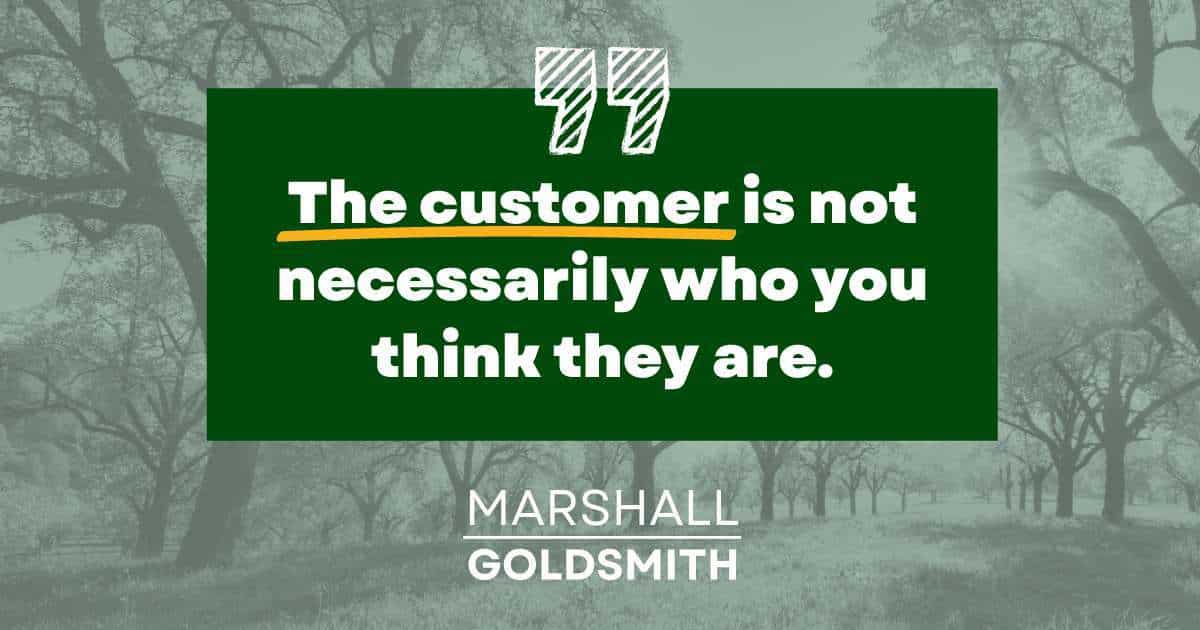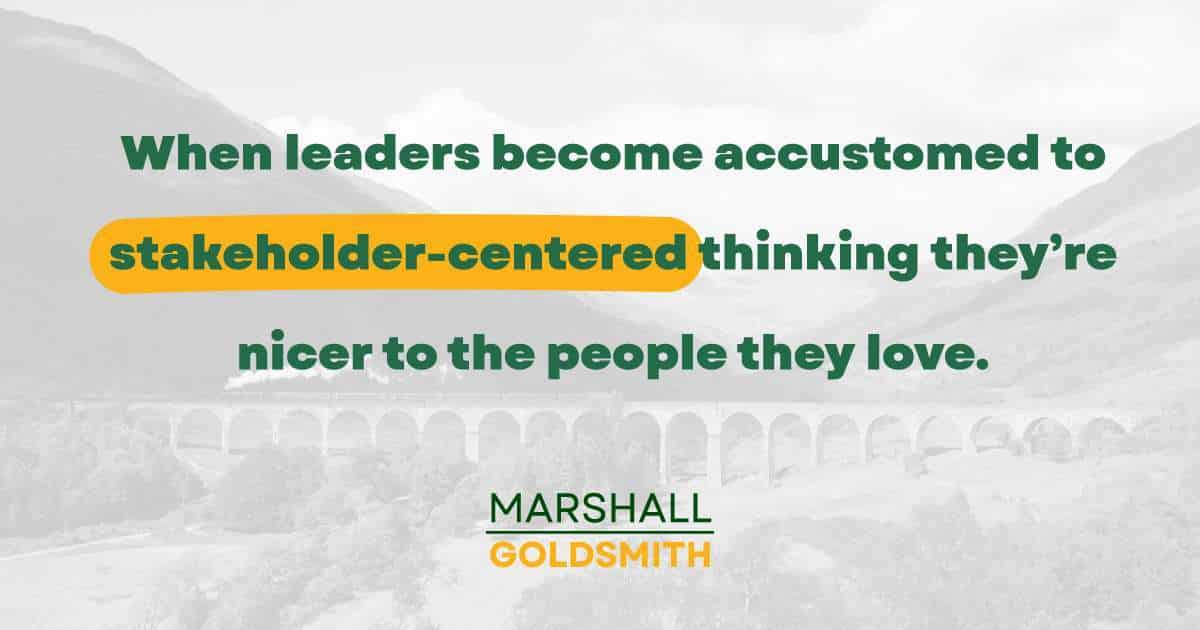Playing Favorites By Marshall Goldsmith There’s a reason I devote...
The insights we gain from others, from our community, from our mentors, from the people we work with, can really serve us as we figure out our paths.
I myself have benefited from a series of profound insights into work and relationships in my career, which led me to create what I consider to be a breakthrough method of coaching for leadership. These are the concepts of
Here, I’d like to explore the notion of stakeholder-centered coaching.
I picked up this next idea from Peter Drucker’s well-known interrogatory, “Who is your customer, and what does your customer value?”
I turned it into stakeholder-centered coaching.
I believe that among Drucker’s many insights, his tight focus on the customer will be his most lasting. Drucker believed that everything in business begins with the customer. Drucker was guiding us to adopt his expansive definition of customer when he asked, “Who is your customer?”
A customer is much more than someone who pays for your product or service. A customer could be someone you never meet, such as the end-consumer of your product or service, or the decision-maker who approves the purchase, or a private citizen engaged in refining and repurposing your product for his own purposes, or a public figure who can influence other future customers.

Drucker was making the point that, since so many situations in our lives are not so nakedly transactional as the you-buy-what-I-sell exchange between vendor and customer—especially when money isn’t changing hands—identifying the “customer” in every circumstance can be a complex challenge. The customer is not necessarily who you think they are.
This insight hit me hard.
It eventually struck me in my coaching practice that my clients also had to broaden their definition of who their customer was. In the primary position, above all the others, were all the people who worked for my client. After all, the leader’s co-workers benefited personally and professionally if the leader improved their behavior. So I tweaked Drucker’s “customer” into “stakeholder.” I did this to emphasize to clients that their employees had a personal investment — or stake — in their improvement.
I wanted my CEO clients to think of themselves as servant-leaders, always placing top priority on doing what their employees—that is, their stakeholders—valued, before worrying about themselves. The structure I provided was stakeholder-centric, not leader-centric. It was transactional, too, a win-win. Leaders earned their employees’ respect. Employees earned their CEOs’ gratitude. (In fact, on August 19, 2019, the Business Roundtable, in a statement signed by 181 CEOs, formally endorsed the concept of benefitting all major stakeholders as the purpose of the corporation.)
This fresh perspective had value beyond the workplace.
People in customer-facing enterprises do not survive if they’re rude and thoughtless with customers. They display their best behavior to the customer, often better than they do with their co-workers and family. In my experience, when leaders become accustomed to stakeholder-centered thinking at work, that thoughtfulness eventually seeps into their personal life as well. They’re nicer to the people they love—their stakeholders at home. Everyone in their life has become a “customer.”
When that happens, you are creating an environment around you that is more forgiving, helpful, and kind.
People will flock to such a place—and stay there.

Adding Too Much Value Won’t Get You There By Marshall...
C-Suite Master Class: No, But, However By Marshall Goldsmith Continuing...
The Doerr Institute: Expanding the Market for Coaches By Marshall...
Making Leadership Development Part of the College Degree at Rice...
Sanyin Siang – Winner of the Thinkers50 Marshall Goldsmith Coaching...
Thinkers50 Marshall Goldsmith Distinguished Achievement Award in Coaching – Nominees...
Leading with Influence: What Is Influence360°? By Marshall Goldsmith Founder...
Are You a Dominator, Manipulator, Persuader or Influencer? By Marshall...
Leading with Influence: Redefining Modern Influence Part 2 By Marshall...
My mission is simple. I want to help successful people achieve positive, lasting change and behavior; for themselves, their people, and their teams. I want to help you make your life a little better. With four decades of experience helping top CEOs and executives overcome limiting beliefs and behaviors to achieve greater success, I don’t do this for fame and accolades. I do this because I love helping people!
As an executive educator and coach, I help people understand how our beliefs and the environments we operate in can trigger negative behaviors. Through simple and practical advice, I help people achieve and sustain positive behavioral change.